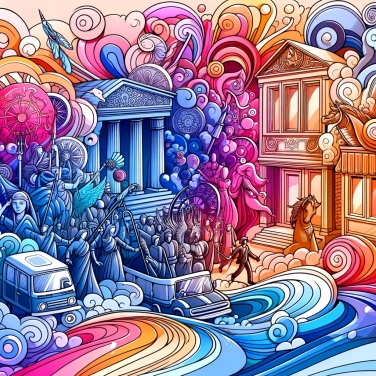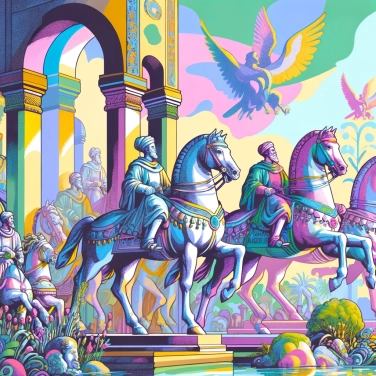In detail, for those interested!
Prestige and power
The representation of horseback riders in equestrian statues dates back to antiquity and is closely linked to prestige and power. These imposing sculptures were often commissioned by kings, emperors, generals, or other influential figures to celebrate their authority and strength. By staging the sponsor on horseback, these statues symbolized their domination, strength, and mastery. The riders were often depicted in a position of victory, emphasizing their power and superiority over others.
The imposing height of equestrian statues also reinforced the idea of grandeur and magnificence associated with the sponsor. Placed in strategic public locations, these sculptures were intended to impress and inspire the respect of subjects and visitors. They were designed to be seen from afar, thus highlighting the high position of the character depicted.
Furthermore, equestrian statues were often used to commemorate battles or major historical events, strengthening the link between power and prestige. They were a way to glorify the military exploits of the rider depicted and to remind of the greatness of their nation or empire.
In summary, equestrian statues have long been a symbol of prestige and power, used by leaders to assert their authority and superiority. These monumental sculptures were an effective way to convey a message of power and domination through sculptural art.
Expression of movement and strength.
Equestrian statues are highly regarded in sculptural art for their ability to express the movement and strength of horsemen and their mounts. Sculptors employ sophisticated techniques to capture the dynamics of the scene depicted. The horses appear to gallop with grace, muscles tense and manes blowing in the wind. The riders, on the other hand, are often depicted in heroic postures, exuding an impression of power and determination. This capture of movement and strength gives equestrian statues a sense of life and realism that draws the attention of viewers.
Historical and cultural symbolism
Equestrian statues have often been used to convey deep symbolic messages related to the history and culture of a people. These imposing sculptures generally embody important historical or mythological figures, thereby reinforcing their significance and influence on society.
In many civilizations, equestrian statues were erected to celebrate heroic figures or powerful leaders. They served to glorify the strength, courage, and greatness of the protagonists depicted, enhancing their status as undisputed leaders. For example, the famous equestrian statue of Marcus Aurelius in Rome symbolizes the power and wisdom of the Roman emperor.
Beyond simply representing physical strength, equestrian statues often express specific cultural and historical values. They can reflect the aesthetic ideals of a given period, religious beliefs, or prevailing social norms. For example, the equestrian statue of Joan of Arc in Paris is a symbol of resistance and patriotism for the French people.
Furthermore, equestrian statues can also serve to perpetuate collective memory by commemorating major historical events or iconic figures. They become visual landmarks in urban spaces, inviting passersby to remember and reflect on the past. For example, the equestrian statue of Simón Bolívar in Caracas recalls the crucial role of the South American liberator in the region's history.
In conclusion, equestrian statues are much more than mere decorative sculptures. They embody powerful symbols charged with historical and cultural meaning, shaping our understanding of the past and our collective identity.
![Explain why some countries change time zones?]()
![Explain why Alexander the Great refused to wear shoes.]()
![Explain why Alexander the Great always wore an impressive helmet.]()
![Explain why the last Chinese emperor was so young when he came to power?]()





















